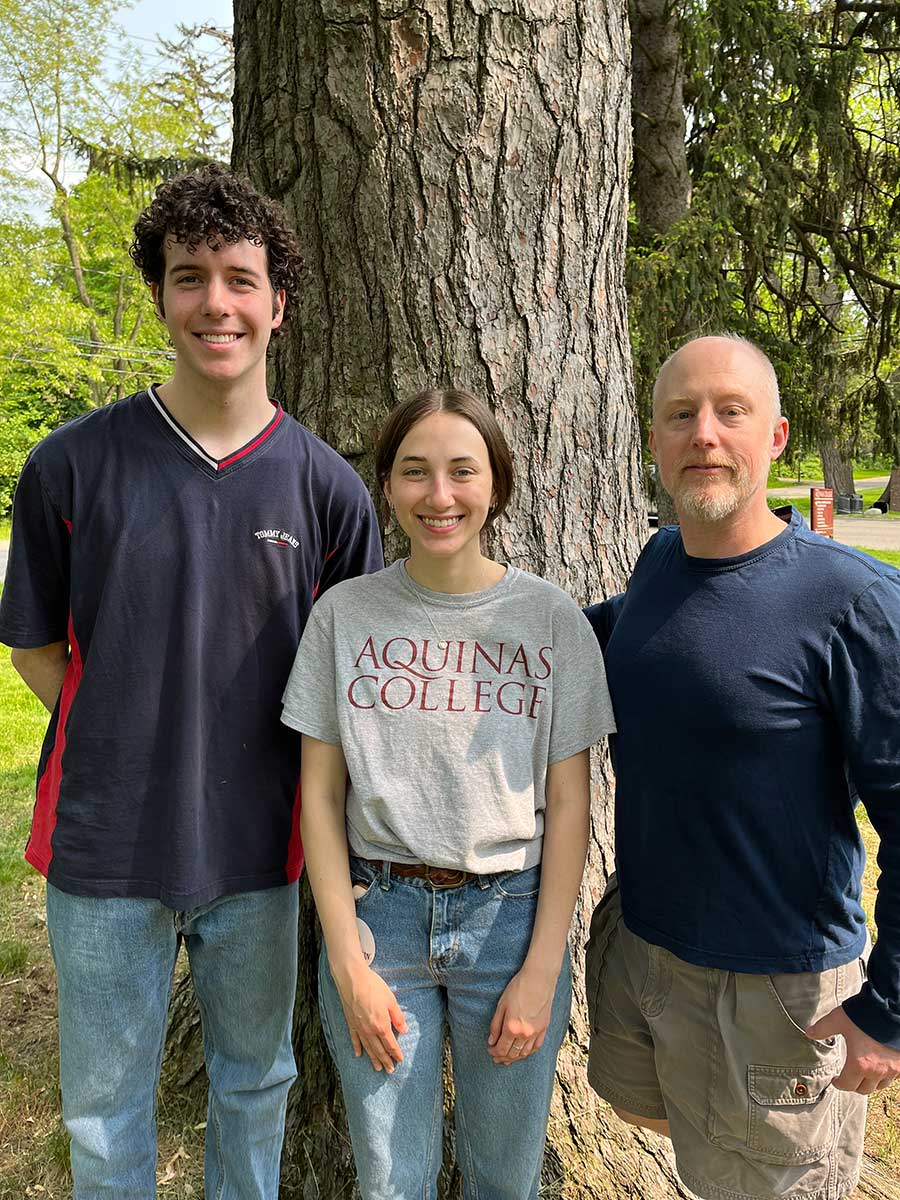Geography and Environmental Science Research
Geography and Environmental Science Research
May 2023 - May 2024
Soil Carbon Sequestration in Different Land Management Practices
Lauren Whetstone
Noah Reilly
 Over twelve weeks, alongside Noah Reilly and with the guidance of Dr. Rasmussen and
Dr. Boyd, I will be conducting research aiming to explore amounts of soil carbon sequestration
and variance in carbon levels relative to different land management practices; the
research process will involve a robust sample size for soil and land use classes.
Research is split into sections; the first section involving physical analysis using
the Bouyoucos method. Sampling and analyzing procedure of soils will account for soil
type/series, texture classes, land use, tillage practices, and crop rotations in agricultural
soils. The second section involving chemical analysis involves developing in-field
testing kits. 1D and 2D NMR, IR, and UV-Vis including complexation with metals for
spectroscopic analysis, along with a variety of solvents and extraction conditions,
will help identify correlations between results and classes of organic materials in
soils and provide carbon sequestration potential. Overall, examining the spatial and
temporal aspects of carbon capture within different soils will provide meaningful
progress on better understanding soil carbon sequestration, and is intended to be
a pilot study for future work to investigate the seasonality of carbon sequestration.
Over twelve weeks, alongside Noah Reilly and with the guidance of Dr. Rasmussen and
Dr. Boyd, I will be conducting research aiming to explore amounts of soil carbon sequestration
and variance in carbon levels relative to different land management practices; the
research process will involve a robust sample size for soil and land use classes.
Research is split into sections; the first section involving physical analysis using
the Bouyoucos method. Sampling and analyzing procedure of soils will account for soil
type/series, texture classes, land use, tillage practices, and crop rotations in agricultural
soils. The second section involving chemical analysis involves developing in-field
testing kits. 1D and 2D NMR, IR, and UV-Vis including complexation with metals for
spectroscopic analysis, along with a variety of solvents and extraction conditions,
will help identify correlations between results and classes of organic materials in
soils and provide carbon sequestration potential. Overall, examining the spatial and
temporal aspects of carbon capture within different soils will provide meaningful
progress on better understanding soil carbon sequestration, and is intended to be
a pilot study for future work to investigate the seasonality of carbon sequestration.
Faculty Advisor: Dr. Jim Rasmussen, Geography / Environmental Studies
Funded by: Mohler-Thompson Summer Research Grant
May 2022 - May 2023
Ecological Components That Contribute to Stream Quality
Sarah Thong
May 2021 - May 2022
An Assessment of the Impacts of Fine Sediment Pollution on Stream Habitat and Water
Quality in West Michigan Streams
Zoe VanderBrug
This project will work in conjunction with local watershed partners and governmental units. It is designed to assess the effects of sedimentation on stream habitat and water quality. This issue has been tied to land use and topsoil erosion and it is one of the focal points in the mission of the Natural Resources Conservation Service. One of the limitations in this mission is the lack of temporally recent and spatially fine monitoring programs. Our goal for this season will be to establish such a program within the context of other monitors.
Faculty Advisor: Jim Rasmussen
Funded by: Mohler-Thompson Summer Research Grant
May 2016 - May 2017
The Past and Future of Agricultural Land in Kent County
Jacob Towne
This project aims to quantify the changes in the area, distribution, and spatial structure
of agricultural land in Kent County from 1967 to 2007, as well as to identify any
impacts which the Purchase of Developmental Rights program may have had. We are also
interested in finding the rate in which these changes are taking place in addition
to seeing if there is a spatial pattern to the change. With these findings we hope
to be able to predict future trends in agricultural land use in Kent County.
Faculty Advisor: Mary Clinthorne
Funded by: Mohler-Thompson Summer Research Grant